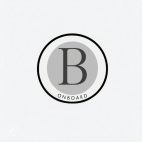Care and Use
Cutting Board Care & Maintenance
Pre-Use Preparation
Prior to first use, we recommend applying a thin coat of food-grade mineral oil to all sides of your cutting board. Although your board was pre-treated with mineral oil and finished with a rich application of Board Guard, an additional coat will enhance moisture resistance and reduce the risk of cracking or warping. After oiling, gently rinse the board with mild soapy water and dry thoroughly.
Never leave your board submerged or sitting in standing water. Never put your board in the dishwasher.
Oiling & Conditioning
We recommend our Board Butter (a blend of mineral oil and beeswax).
Mineral Oil: Penetrates deep into the wood fibers to hydrate and preserve structural integrity.
Board Guard: Forms a protective barrier on the surface, sealing in moisture and enhancing the board's finish.
To apply: Clean and dry board. Then with a soft cloth, work in a thin layer of Board Guard to the entire board. Wait 20 min and wipe off any excess.
Recommended oiling schedule:
To assist with acclimation to your climate.
- Once per week during the first month
- Once per month for the next few months
- As needed thereafter (dry appearance is a good indicator)
Use only USP-grade mineral oil (readily available in most pharmacies or online). Avoid vegetable, coconut, olive, or any organic oils, as they may oxidize and become rancid. Steer clear of nut-based oils to prevent potential allergen exposure.
Cleaning & Safety
To clean:
- Scrape off food debris.
- Wash using warm water and a mild dish detergent.
- Rinse and dry immediately.
Note: A slightly rough texture may develop after the initial wash as wood fibers rise with moisture exposure. This is normal and will smooth out with use.
To sanitize:
- Mix equal parts white vinegar and water.
- Apply to the surface and let sit briefly.
- Rinse thoroughly and dry completely.
- Reapply mineral oil if needed.
Proper storage:
- Keep the board dry between uses.
- Do not allow water to collect underneath.
- Store on feet or upright on edge for airflow.
To remove moisture during use, use a steel scraper or spatula—this can eliminate up to 75% of surface moisture. Do not use steel brushes, which may damage the wood and create areas for bacterial growth.
Food Safety
Always wash and sanitize boards after use with raw meat, poultry, or seafood. Never use the same unwashed board for cutting fresh produce or ready-to-eat items. Ideally, use separate boards for raw proteins and uncooked foods.
Stains & Odors
Stains from foods like beets or berries are common with maple and cherry boards. While Board Guard helps prevent staining, consider using a separate board for such items. If stains occur, they typically fade with time. Lemon juice and kosher salt may also be used for mild stain removal.
Do not use bleach, hydrogen peroxide, or baking soda, as these may damage or discolor the wood.
To neutralize odors (e.g., garlic or onion), rub the affected area with a cut apple or potato.
Final Note
With proper care, your cutting board will remain a durable and beautiful tool for years of culinary enjoyment. May it serve you well in preparing countless meals for family and friends.

